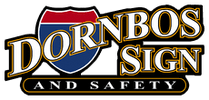The History of Road Signs
20th Nov 2017
The history of road signs starts with the history of the first roads. The Roman Empire was the first civilization to construct roads. At its height, the Romans created 4,400 pound stone markers, referred to as milestones. The Romans numbered and placed these milestones at specific intervals along the 62,00 miles of roads.
The first signs were for bicyclists
Fast forward a few hundred years to the Middle Ages when roads began being named. The roads were typically named after the towns to which they led. In 1648, a law in Britain required each parish to construct guide posts.
The modern idea of road signs has its origins as a warning system for bicyclers. Cycling was in its infancy in the early 1800s. Eventually, the developments in technology allowed for bikers to travel faster and farther. With this wonderful advancement came new challenges.
In Europe, new cycling organizations and local authorities began posting warning signs. These were warnings to cyclists of dangerous turns and steep hills. In England, an estimated 4,000 warning signs were posted in the late 1800s. One sign that originated from this era was a skull and crossbones, which was a warning to cyclists of steep hills.
Cars make signs even more necessary
Then came the wonderful age of cars. And with the ability to travel, there was also the great opportunity to get lost. Drivers formed clubs as early as 1899, making it their mission to place and maintain street signs that offered direction. This also led to savvy business owners putting up their own signs to advertise their establishments that were nearby.
The first sign made its debut in 1915 in Detroit. This was actually a year after the first electric traffic signal was erected in Cleveland. The first three-color traffic signal would come five years later.
In 1922, representatives from Wisconsin, Indiana, and Minnesota toured several states to find ideas for uniform signs and street markings. These representatives wanted to standardize messaging with shapes. The first shapes and messages included:
- Round for railroad crossing
- Octagon for stop
- Diamond for curve ahead
- Square for caution or attention
- Rectangle for mileage and speed limit signs
With specific shapes and messages, drivers could better determine what action was needed in the dark. Those first signs were black text on a white background.
Standardizing begins
In January 1923, these recommendations were presented to the Mississippi Valley Association of State Highway Departments and later to the American Association of State Highway Officials. They became the basis for the earliest national standardization. This became official in 1935.
What happened next was a lot of confusion! Not until 1948 did the U.S. government take a role in simplifying and standardizing signage. Signage has continued to evolve since then. Using yellow lines for separate traffic is as recent as the 1970s. Modern technology will, of course, continue to impact street and traffic signs. One example is how technology allows those with vision impairment to “hear” the walk/don’t walk signs.
There is more consistency now and signage across the country is standardized. The Department of Transportation constantly updates the Manual on Uniform Traffic Control Devices (MUTCD) to make sure all states are using the same signs, shapes, words, letters, and colors.
It’s hard to believe that traffic signs were conceived long before cars were even an idea. They are now a part of normal life, creating safe interactions for millions of drivers every day. These signs are the basis of the “rules” of driving. They tell us when to stop, where not to go and what to expect ahead.
For all your traffic and road signs, trust Dornbos Sign. We offer every type of stop, traffic or safety sign you need.




